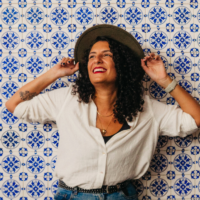If you’ve ever been curious about Mexico’s most colorful and heartfelt celebration, you’re in for a treat. The Day of the Dead, or Día de los Muertos, is a festival like no other—where the living and the dead come together in a beautiful dance of remembrance and joy.
During the festivities, streets are lined with vibrant marigolds, faces are painted as elegant skeletons, and altars start to brim with offerings that tell stories of love and memory. It’s a time when the air is thick with the scent of copal incense, and the sound of laughter and music fills every corner.
I first experienced the Day of the Dead in the enchanting town of Papantla de Olarte, and let me tell you, it was a life-changing adventure. From joining a parade of Catrinas in the bustling city streets to sharing tamales and stories with locals in candlelit cemeteries, the celebration is both profoundly moving and incredibly fun.
Whether you’re a seasoned traveler or planning your first visit, this guide will help you dive into the magic of Día de los Muertos, with tips on where to go, what to do, and how to fully embrace this unforgettable cultural experience.
So, grab your sugar skulls and get ready to celebrate life and death in the most joyous way possible. Let’s explore how to celebrate the Day of the Dead in Mexico together!
Understanding the Significance of the Day of the Dead in Mexico
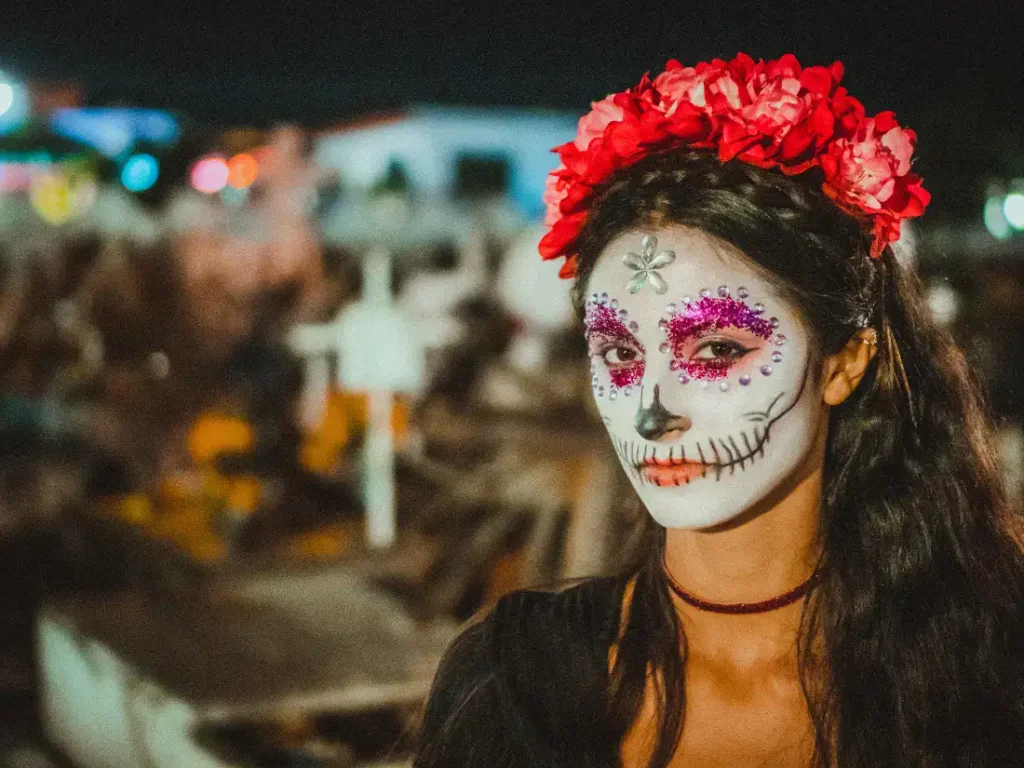
The Day of the Dead, or Día de los Muertos, is a deeply rooted Mexican tradition that dates back thousands of years. Originating with the indigenous peoples such as the Aztecs, Toltecs, and other Nahua civilizations, the festival originally took place in the summer.
However, after the Spanish colonization, it was moved to coincide with the Catholic holidays of All Saints’ Day and All Souls’ Day on November 1st and 2nd. This syncretism resulted in a unique celebration that honors the deceased with a blend of indigenous rituals and Catholic influences.
Nowadays, the Day of the Dead is a time for families to come together and remember their loved ones who have passed away. It’s a celebration of life and death, where death is viewed not as an end but as a natural part of the human cycle.
In the weeks preceding the date, families build altars, or ofrendas, together and decorate them with photos, favorite foods, and personal items of the departed, along with marigolds and candles.
These offerings are believed to guide the souls back to the world of the living for a night of celebration. The festival is a vibrant display of love, remembrance, and cultural pride, reinforcing the bonds between the living and the dead.
Difference from Halloween
While the Day of the Dead and Halloween occur around the same time, and both involve themes of death, they are fundamentally different in their origins and practices.
Halloween, with roots in the ancient Celtic festival of Samhain, is a night of spooky fun, costumes, and trick-or-treating, focusing on fear and the supernatural.
In contrast, the Day of the Dead is a joyous, colorful celebration that honors the deceased with respect and love. It is not about ghosts and goblins but about family, memory, and the continuity of life.
The contrasting tones of fear versus festivity and the differing cultural backgrounds make each holiday unique in its own right.
Traditional Day of the Dead Activities
Here is how most Mexicans spend the Day of the Dead:
1. Building and Decorating Altars (Ofrendas)
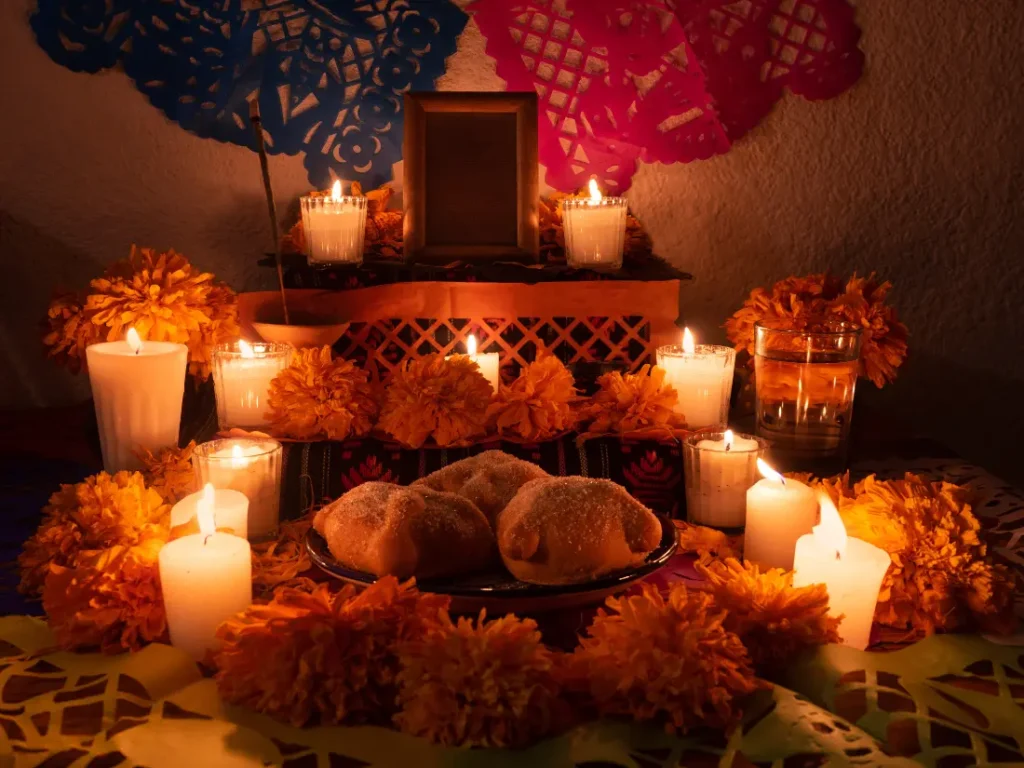
One of the most significant traditions during the Day of the Dead is the creation of altars, or ofrendas, in honor of deceased loved ones.
As I mentioned before, families set up these altars in their homes, cemeteries, or public spaces, meticulously decorating them with offerings that hold special meaning. The altars are adorned with photographs of the departed, marigold flowers (cempasúchil), candles, incense (usually copal), and papel picado (colorful paper banners).
The ofrenda is a beautiful and heartfelt tribute, symbolizing the connection between the living and the dead and celebrating the lives of those who have passed.
2. Preparing and Enjoying Traditional Foods
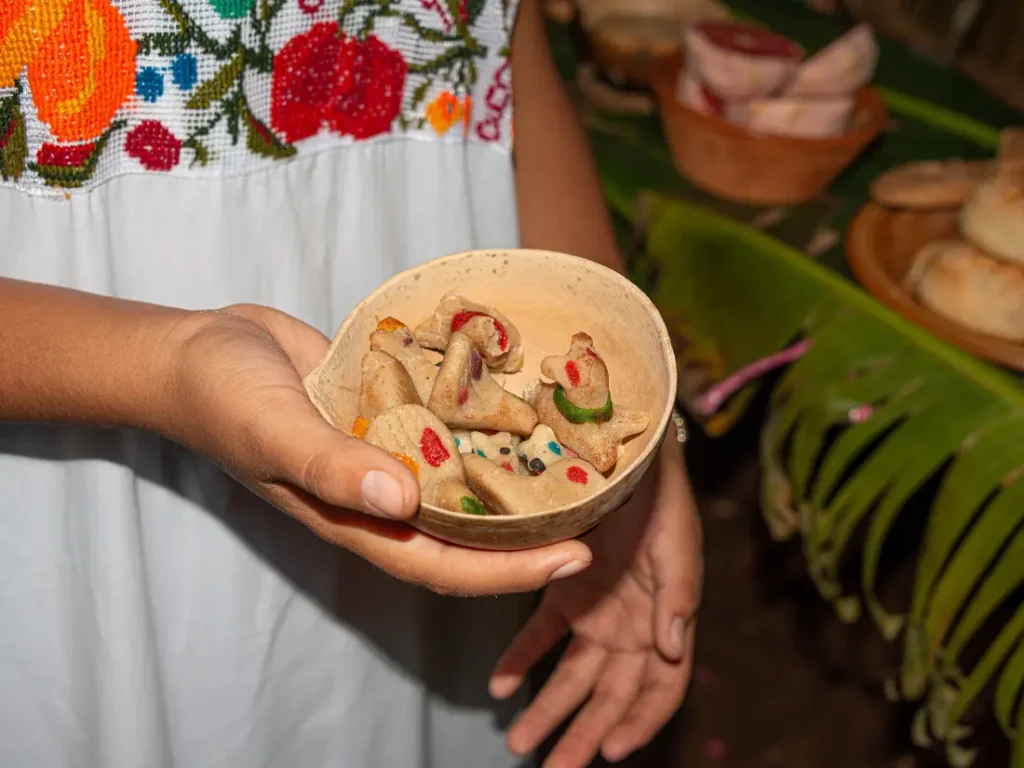
Food plays a central role in the Day of the Dead celebrations, with families preparing and sharing traditional dishes that their loved ones used to enjoy in life. One of the most iconic foods is pan de muerto (bread of the dead), a sweet, soft bread often flavored with orange blossom and decorated with bone-shaped dough pieces.
Tamales, mole, and sugar skulls (calaveras de azúcar) are also standard offerings found on altars and at family gatherings. The preparation of these foods is not only a culinary tradition but also a way to honor and remember the departed through the flavors and aromas they loved.
Sharing these dishes with family and friends reinforces the communal spirit of the celebration.
3. Visiting Cemeteries and Honoring the Departed
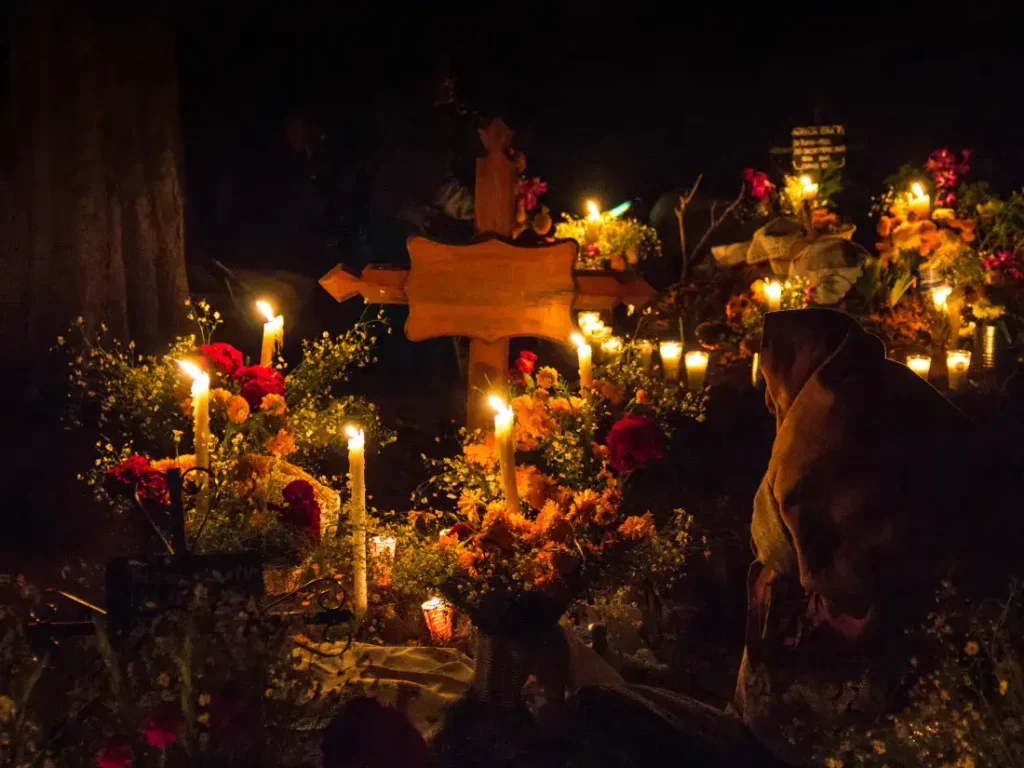
A key aspect of the Day of the Dead is visiting cemeteries to honor the deceased. Families gather at gravesites, cleaning and decorating them with marigolds, candles, and other offerings.
In many regions of Mexico, such as Michoacán and Oaxaca, the cemeteries come alive with vibrant celebrations. Families often spend the entire night at the gravesites, singing, praying, and sharing stories about their loved ones.
This practice is not somber but rather a joyous reunion with the spirits of the departed. Music, dancing, and communal meals are common, creating an atmosphere of festivity and remembrance.
These cemetery visits symbolize the enduring bond between the living and the dead, transforming the spaces of mourning into places of celebration and connection.
4. Papel Picado and Marigold Decorations
Papel picado (cut paper) and marigold decorations are quintessential elements of the Day of the Dead celebrations across Mexico. These intricately cut paper banners often strung across streets, altars, and homes.
These colorful banners feature designs of skeletons, flowers, and other symbolic motifs, adding a festive and artistic touch to the celebrations. Marigolds, known as cempasúchil in Spanish, is another key decoration.
These bright orange flowers are believed to guide the spirits of the deceased back to the world of the living with their vibrant color and strong scent. Marigold petals are often scattered on altars and graves, creating beautiful and fragrant pathways.
Best Destinations in Mexico for Day of the Dead
The Day of the Dead is not equally celebrated throughout Mexico, with each region showcasing its unique customs, traditions, and interpretations of this festival.
This diversity reflects the vast cultural diversity of the country and highlights how local history, indigenous practices, and contemporary influences shape the celebrations.
1. Oaxaca: Parades and Festivities
Oaxaca is one of the most traditional and culturally rich destinations to experience the Day of the Dead.
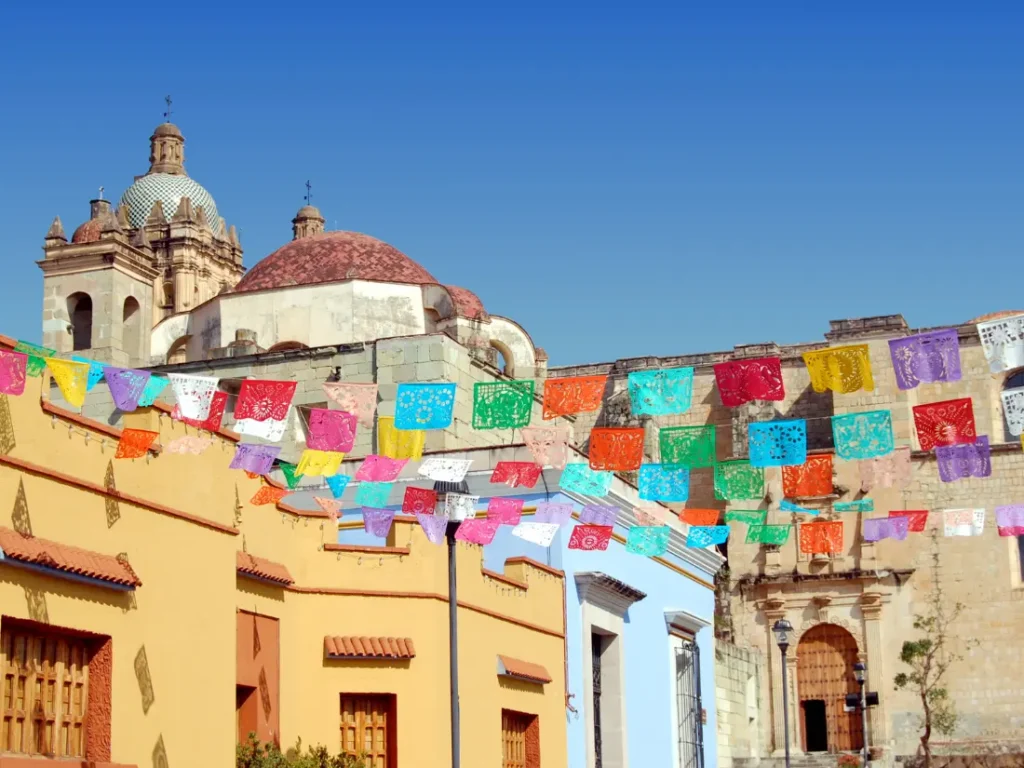
The city is renowned for its elaborate parades, colorful markets, and lively street celebrations. The festivities begin in late October and continue through the first days of November, with the streets filled with music, dancing, and beautifully adorned altars.
The comparsas, or costume parades, are a highlight, featuring participants dressed in elaborate costumes and face paint, often depicting skeletons and other figures associated with the Day of the Dead.
Oaxaca’s markets are a sensory feast, offering traditional foods, crafts, and decorations unique to the region. The city’s rich indigenous heritage adds a spiritual dimension to the festivities, making it an unforgettable destination for anyone interested in this unique Mexican tradition.
Immerse yourself in the rich traditions of Día de los Muertos in Oaxaca! Join an unforgettable walking tour during the festivity. Book now.
2. Mexico City: Grandeur and Celebration
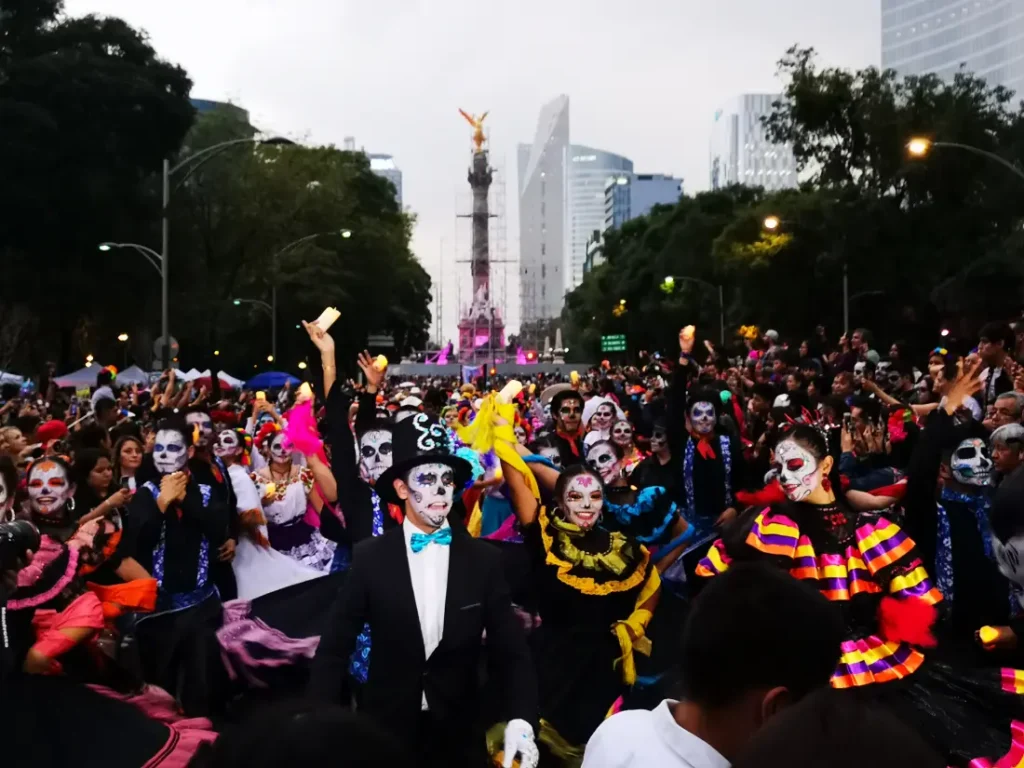
Mexico City offers a grand and diverse Day of the Dead experience, blending traditional practices with modern interpretations.
The city’s main events take place in iconic locations such as the Zócalo, where massive ofrendas and art installations are set up, and Paseo de la Reforma, which hosts a spectacular parade featuring giant skeletons, floats, and thousands of participants. The good news is that you can see all this guided by a local in a walking tour.
The parade, known as the Mega Procesión de Catrinas, showcases elaborate costumes and makeup inspired by La Catrina, an iconic figure symbolizing death in Mexican culture.
In addition to the public celebrations, Mexico City’s museums and cultural centers host exhibitions and workshops related to the Day of the Dead, providing a deeper understanding of its significance.
Ready to experience the magic of Día de los Muertos in Mexico City? Book your Day of the Dead tour now and immerse yourself in Xochimilco’s parades, altars, and rich traditions! Don’t miss out on this unforgettable celebration – reserve your spot today!
3. Michoacán: Indigenous Traditions and Night Vigils
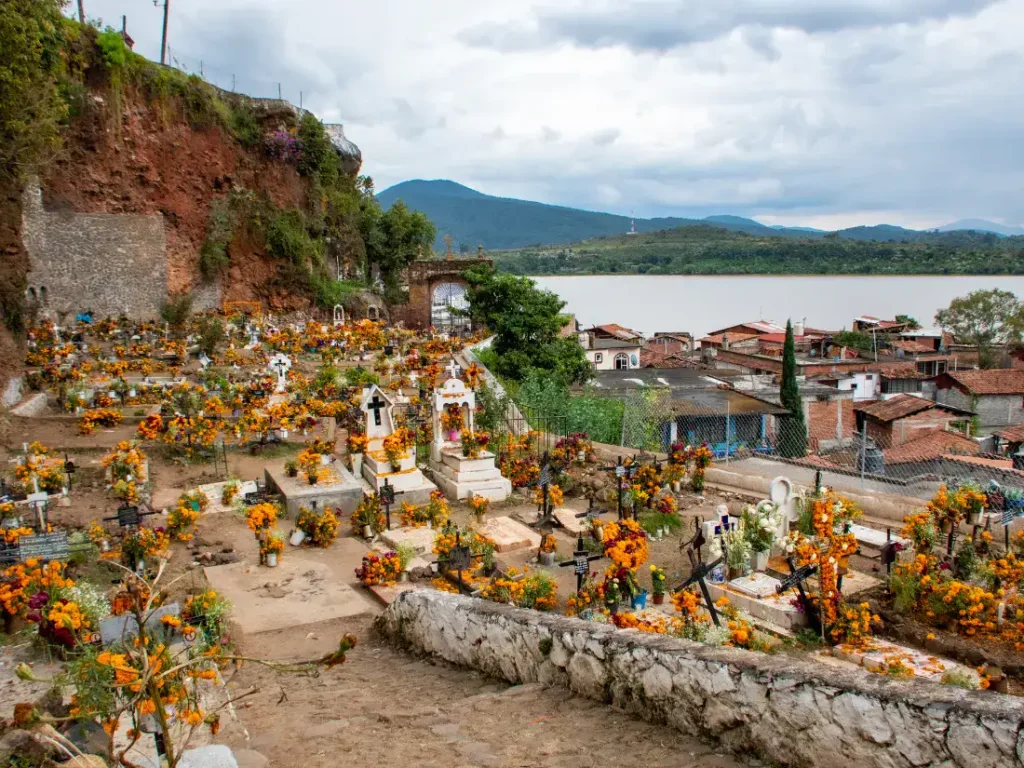
Michoacán is famous for its deeply rooted indigenous traditions and mystical Day of the Dead celebrations, particularly in the towns around Lake Pátzcuaro.
One of the most renowned sites is the island of Janitzio, where the Purepecha people hold an enchanting and solemn vigil on the night of November 1st.
As dusk falls, the island’s cemetery is illuminated by hundreds of candles, and families gather to honor their ancestors with prayers, songs, and offerings. The sight of the candlelit graves against the night sky creates a serene and spiritual atmosphere.
Another notable town is Tzintzuntzan, where visitors can witness traditional dances, hear ancient stories, and participate in ceremonies passed down through generations.
4. La Calaca Festival in San Miguel de Allende
San Miguel de Allende, a UNESCO World Heritage site, hosts the La Calaca Festival, which has become a prominent event during the Day of the Dead celebrations.
La Calaca, meaning “the skeleton,” features a diverse array of activities including art installations, live music, theatrical performances, and workshops.
The festival’s highlight is the parade of illuminated Catrinas—elegantly dressed skeleton figures that symbolize death in Mexican culture. Participants also elaborate costumes and face paint, transforming the streets into a colorful spectacle of light and sound.
The festival also includes public altar displays where locals and visitors can honor their deceased loved ones.
5. Pátzcuaro’s Candlelit Cemeteries
The town of Pátzcuaro in Michoacán is renowned for its deeply spiritual and visually stunning Day of the Dead celebrations, particularly the candlelit cemeteries.
The most iconic site is the island of Janitzio, where the Purepecha people conduct an all-night vigil on November 1st. As dusk falls, the cemetery is illuminated by hundreds of candles, creating a mesmerizing glow against the night sky.
Families gather at the graves of their loved ones, adorned with marigolds, candles, and personal offerings. They spend the night praying, singing, and sharing stories, fostering a sense of connection and remembrance.
Tips for Travelers Celebrating the Day of the Dead
When celebrating the Day of the Dead in Mexico, it’s essential to participate respectfully and honor the traditions of the local communities. Here are some essential tips to ensure you engage appropriately:
Respectful Participation in Local Customs
- Learn about the traditions: Familiarize yourself with the history and significance of the Day of the Dead. Understanding its meaning will help you appreciate the celebrations more deeply.
- Ask for permission: Always ask for permission before taking photos of people, altars, or ceremonies. Some moments are private and deeply personal for the families involved.
- Respect altars and graves: Do not touch or disturb the offerings on altars and graves. These items are placed with great care and have significant meaning for the families.
- Participate respectfully: When joining processions or attending ceremonies, follow the lead of locals. Dress modestly and be mindful of your behavior.
- Support local artisans: Purchase decorations, food, and crafts from local vendors. This supports the community and helps preserve traditional practices.
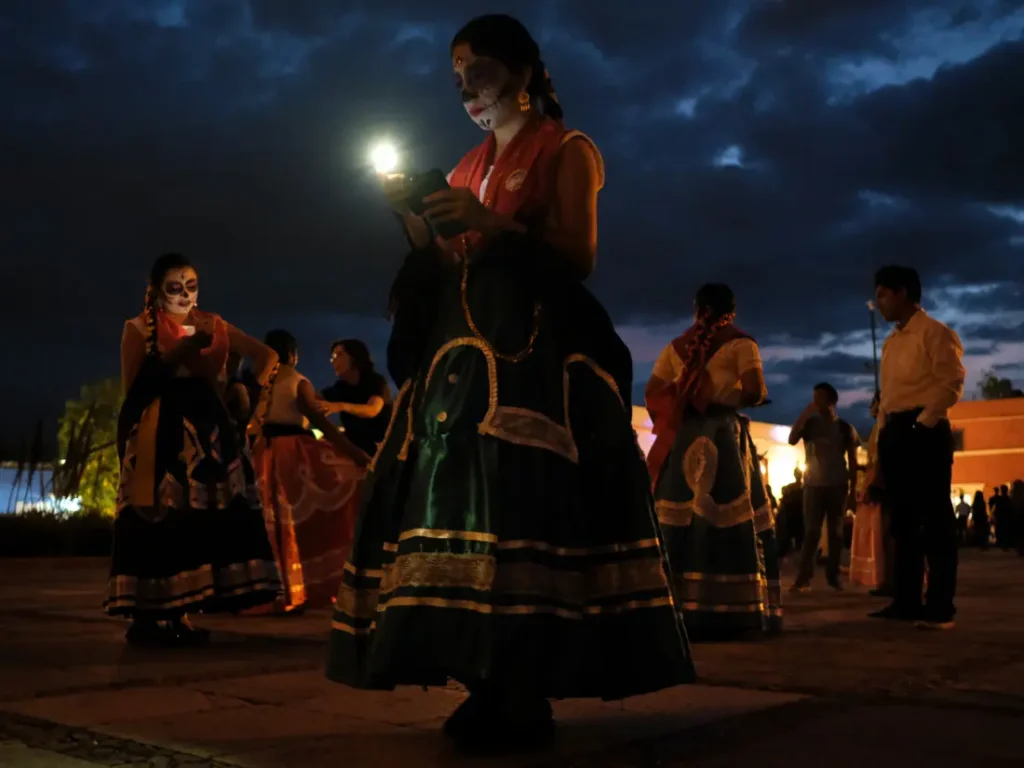
Best Times to Visit and Participate in Festivities
To fully experience the Day of the Dead, plan your visit during the peak celebration period, typically from October 31st to November 2nd. Here are some tips on timing your visit:
- October 31st: Known as the eve of the Day of the Dead, this night is often filled with preparations and early celebrations, including the creation of altars and the beginning of vigils.
- November 1st: This day, known as Día de los Inocentes or Day of the Little Angels, is dedicated to children who have passed away. Many families honor deceased children with special ofrendas and ceremonies.
- November 2nd: Día de los Muertos, or Day of the Dead, is the main day of celebration, focusing on adults who have passed. This is when the most significant public events, parades, and cemetery vigils take place.
- Extended festivities: In some regions, celebrations can begin as early as mid-October and extend into the first week of November. Check local event schedules for specific dates and activities.
Packing Essentials for the Day of the Dead
When preparing for your trip to Mexico for the Day of the Dead, packing thoughtfully can enhance your experience. Here are some essential items to bring:
- Comfortable clothing and footwear: You’ll likely walk and stand for long periods during parades, cemetery visits, and other festivities. Comfortable shoes and weather-appropriate clothing are crucial.
- Layers: It’s winter in Mexico, and the weather usually gets pretty chill in some parts of the country. It can vary significantly between day and night. Bring layers to stay comfortable in changing temperatures.
- Reusable water bottle: Staying hydrated is important, especially when spending long days outdoors. A reusable water bottle is eco-friendly and convenient.
- Camera: A good camera or smartphone with plenty of storage is essential to capture vibrant scenes and personal memories. Mexicans dressed and painted for the Day of the Dead usually will be happy to pose for a photo, but remember to be respectful and ask first. I talk more about it on the following topic.
- Personal items: Bring sunscreen, insect repellent, and a hat to protect yourself from the sun. Hand sanitizer and tissues can also be handy.
- Gifts or offerings: If you plan to visit a local’s home or participate in a community event, consider bringing a small gift or offering, such as flowers or candles, as a gesture of respect and appreciation.
Capturing the Experience: Photography and Souvenirs
Photography Etiquette and Tips
Attending the Day of the Dead in Mexico is probably one of the most photogenic trips you will ever take! Here are some tips to ensure you do so respectfully and effectively:
- Ask for Permission: Always seek permission before photographing individuals, especially during intimate moments such as prayers or family gatherings at gravesites. A polite request shows respect for their privacy and traditions.
- Respectful Distance: Maintain a respectful distance when taking photos of altars (ofrendas), ceremonies, and parades. Avoid obstructing the path or disrupting the events.
- Discretion in Cemeteries: Cemeteries are places of reverence. Be discreet with your camera, and avoid using flash, which can be intrusive and disrespectful during night vigils.
- Capture the Details: Focus on the intricate details that make the Day of the Dead special, such as the decorations on the altars, the vibrant face paint, and the beautiful marigold arrangements.
- Candid Shots: Candid shots often capture the genuine emotion and spirit of the festivities. Look for moments of interaction, laughter, and reflection.
- Share and Tag Respectfully: If you plan to share your photos on social media, consider tagging locations and giving credit to the artists and participants. Share the story behind the photo to add context and honor the tradition.
Meaningful Souvenirs to Bring Home
Bringing home meaningful souvenirs from your Day of the Dead experience can help you remember and share the celebration with others. Here are some thoughtful and culturally significant items to consider:
- Sugar Skulls (Calaveras de Azúcar): These beautifully decorated skulls symbolize the Day of the Dead. You can find edible versions or ceramic ones to display at home.
- Papel Picado: Intricately cut paper banners that are often used to decorate altars and streets during the festival. They make colorful and lightweight souvenirs.
- Handcrafted Catrinas: These elegantly dressed skeleton figurines, representing death, are often made from clay or papier-mâché. Each Catrina is a unique piece of art.
- Traditional Clothing and Accessories: Embroidered blouses, rebozos (shawls), and jewelry featuring traditional Mexican designs are beautiful reminders of the cultural richness of the festival.
- Marigold Products: Dried marigold flowers or marigold-scented items can evoke the memory of the vibrant decorations used during the celebrations.
- Local Art and Crafts: Support local artisans by purchasing handmade crafts, such as pottery, textiles, and paintings that depict Day of the Dead themes.
- Books and Calendars: Look for books or calendars that explain the history and significance of the Day of the Dead. They can be educational and visually stunning keepsakes.
FAQ About the Day of the Dead in Mexico
The Day of the Dead, or Día de los Muertos, is a Mexican holiday celebrated on November 1st and 2nd. It honors deceased loved ones through various traditions, including building altars, preparing traditional foods, and visiting cemeteries.
While both holidays occur around the same time and involve themes of death, the Day of the Dead focuses on honoring and celebrating deceased loved ones, whereas Halloween is more about spooky fun and costumes. The Day of the Dead has deep cultural and spiritual significance in Mexico.
Key destinations include Oaxaca for its parades and festivities, Mexico City for its grand celebrations, and Michoacán for its indigenous traditions and night vigils, especially around Lake Pátzcuaro
Ofrendas are built to honor deceased loved ones, featuring photos, favorite foods, personal items, marigolds, candles, and papel picado. They are a central element of the Day of the Dead celebrations.
Traditional foods include pan de muerto (bread of the dead), tamales, mole, and sugar skulls (calaveras de azúcar). These foods are often placed on altars and shared among family and friends.
Learn about the traditions, ask for permission before taking photos, respect altars and graves, follow the lead of locals in ceremonies, and support local artisans by purchasing their crafts.
The peak celebration period is from October 31st to November 2nd, with various activities and events occurring during these days. Some regions may start festivities as early as mid-October.
Pack comfortable clothing and footwear, layers for varying temperatures, a reusable water bottle, a camera, personal items like sunscreen and insect repellent, and possibly small gifts or offerings if visiting local homes.
Always ask for permission before taking photos of people or altars, maintain a respectful distance, avoid using flash in cemeteries, and be discreet and respectful during ceremonies.
Consider bringing home sugar skulls, papel picado, handcrafted Catrinas, traditional clothing and accessories, marigold products, local art and crafts, and educational books or calendars about the Day of the Dead.
Editor of Yes, Summer! I am a Brazilian journalist, writer, and digital nomad. I have been traveling the world, telling stories, and tasting local beers since 2010. I am the co-founder of 360meridianos, a reference in travel writing in Brazil, and author of the newsletter Migraciones. On social media, I'm always reachable at @natybecattini.
